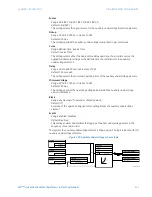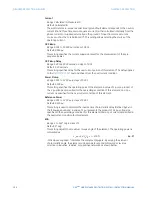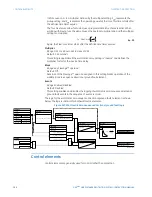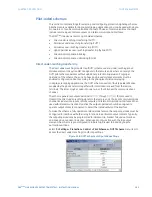
280
D90
PLUS
LINE DISTANCE PROTECTION SYSTEM – INSTRUCTION MANUAL
GROUPED PROTECTION ELEMENTS
CHAPTER 7: PROTECTION
Breaker Position 1 Phase B
Range: any FlexLogic™ operand or shared operand
Default: Off
This setting selects the operand to represent the protected breaker early-type auxiliary
switch contact on pole B. This contact is normally a non-multiplied form-A contact. The
contact may even be adjusted to have the shortest possible operating time. This setting
is valid only for single-pole breaker failure schemes.
Breaker Position 1 Phase C
Range: any FlexLogic™ operand or shared operand
Default: Off
This setting selects the operand to represent the protected breaker early-type auxiliary
switch contact on pole C. This contact is normally a non-multiplied form-A contact. The
contact may even be adjusted to have the shortest possible operating time. This setting
is valid only for single-pole breaker failure schemes.
Breaker Position 2 Phase B
Range: any FlexLogic™ operand or shared operand
Default: Off
This setting selects the operand that represents the protected breaker normal-type
auxiliary switch contact on pole B (52/a). This may be a multiplied contact. This setting is
valid only for single-pole breaker failure schemes.
Breaker Position 2 Phase C
Range: any FlexLogic™ operand or shared operand
Default: Off
This setting selects the operand that represents the protected breaker normal-type
auxiliary switch contact on pole C (52/a). This may be a multiplied contact. For single-
pole operation, the scheme has the same overall general concept except that it provides
re-tripping of each single pole of the protected breaker. The approach shown in the
following single pole tripping diagram uses the initiating information to determine which
pole is supposed to trip. The logic is segregated on a per-pole basis. The overcurrent
detectors have ganged settings. This setting is valid only for single-pole breaker failure
schemes.
Upon operation of the breaker failure element for a single pole trip command, a three-
pole trip command should be given via the
BKR FAIL 1 TRIP OP
output operand.
The logic for the breaker failure element is shown in the following figures. The logic is
identical for both breaker failure elements.



































